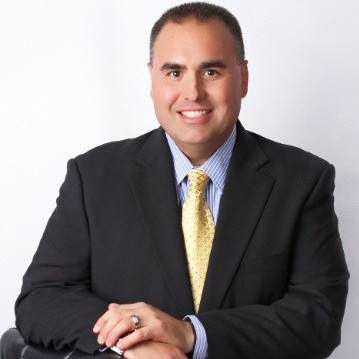Customer Experience Best Practices
The employee experience is still, we think, 50% of the equation.

Steven Boberski
Chief Technology Officer for Public Sector, Genesys
Using technology and data analytics to improve the ability for employees in government to create great CX is 50% of the equation, explains Genesys Public Sector...
For federal agencies, the journey to world-class customer experience starts with good employee experience. When it comes to those all-important contact centers, employees who interact with constituents and citizens need all the information about a given transaction to be most effective.
Steven Boberski, chief technology officer for public sector at Genesys, offered an example. An agency’s technology platform should be geared to providing call center employees with specifically what a person is trying to do or find out and the journey that person has already been on in those efforts. That enables the call center employee to then say, “ ‘Oh, I see you’ve tried to renew your license, or I see you’ve been trying to get your passport,’ as opposed to, “Hi, how can I help you?’ ”
That not only can save time, but it lets the customer avoid starting over or giving a long recitation, which hastens the call center agent’s capacity to help.
“So that’s a great experience for the caller and for the agent because he doesn’t have to play inquisitor and can focus more on what the needs are,” Boberski said.
The self-service model organizations deploy outwardly — so customers can avoid calls, visits or mail altogether — should be matched by the technology deployed internally, he advised.
“Every agency has an internal contact center, whether it’s human resources, or help desk or something like that,” Boberski said. “The employee experience is still, we think, 50% of the equation. You have to focus on both.”
The employee experience is still, we think, 50% of the equation.

Chief Technology Officer for Public Sector, Genesys
From a technology standpoint, the lift will vary from agency to agency. To improve call center capabilities in one agency might require as little as using application programming interfaces to bring in data, he said, but at another agency, it might require recoding the website itself to incorporate advanced discovery.
Moreover, “there’s always an artificial intelligence component. There’s absolutely an analytical component,” he said. Those components, which Genesys offers in the cloud, operate in “as near-real time as possible.” The result is “a whole iterative process. You listen, you process, you respond, and then you learn. That’s our process for experience as a service.”
Boberski added, “The database is constantly getting updated. Agents have better information at their disposal, and that applies to inside or outside.”
Customer experience, in that scenario, becomes data-driven and ever-improving.
Boberski pointed to natural language processing functions that can capture and analyze conversations as they happen as tools that can improve services quickly and make call center staff more productive. A machine listening engine can analyze calls and alert supervisors to use “whisper,” a technology for letting them coach call handlers behind the scenes, or to use “barge” to join a call in real time if something isn’t going well.
As the database grows in the knowledge, you’re drawing from the experience customers are having. Then, you’re going to make improvements instantly.

Chief Technology Officer for Public Sector, Genesys
When a handoff to a supervisor or subject matter expert is required, the call capture will ensure the next handler knows what’s going on, thereby enhancing the experience of the caller. Boberski said this type of technology, which is becoming common in consumer industries such as airlines for reservations, has begun to enter government service centers.
The analytic results from reviewing calls and call data can also yield insights that agencies can use to improve call center service quality over time and to aid in training employees.
“Quality management is really where call recording is aimed from an agency perspective,” Boberski said. Combining call data with transaction screen captures yields what he called a “great planning tool.”
In all cases, he said, an agency must plan its capture systems carefully, to avoid unlawfully retaining personally identifiable information.
When capturing and analyzing customer experience data, Boberski said it’s important to take a comprehensive view. Often people use multiple ways of interacting with an agency. “That experience is all touchpoints,” he said.
Therefore, agencies must have visibility into all possible touchpoints, Boberski said. For example, the analytics might show: “Wow, this is the 36th time in the last hour someone’s come directly from the website to the [call] queue. There’s probably a problem with the website that we didn’t catch. Or, wow, this week, 150 different people have gotten stuck at this phase of passport renewal. Perhaps we can look at that process.”
With modern, cloud-based data services focused on customer experience, he said, “we have the capability to have those analytics” and insights in real time. Over time, with agents better enabled to help, and processes and websites properly tuned, traditional customer experience metrics like call wait times will improve automatically.
Listen to the full show:
Copyright © 2024 Federal News Network. All rights reserved. This website is not intended for users located within the European Economic Area.

Chief Technology Officer for Public Sector, Genesys

Host, The Federal Drive, Federal News Network

Chief Technology Officer for Public Sector, Genesys

Host, The Federal Drive, Federal News Network
